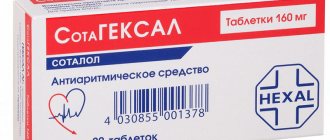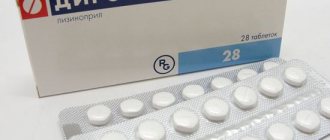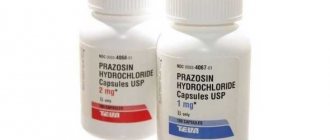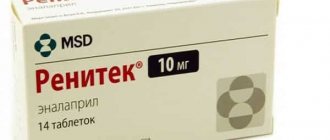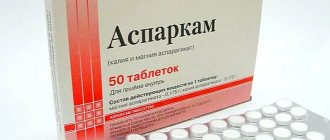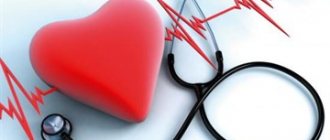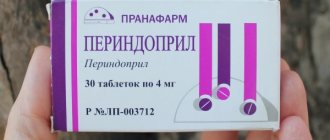Glycine for risk groups
How should people at risk take this drug and how much should they drink?
Women who are pregnant have a harder time experiencing attacks of vegetative-vascular dystonia, which are characterized by changes in blood pressure, mood swings, irritability and tearfulness. In addition, pregnant women often experience enormous fear of childbirth, which leads to the development of panic attacks.
In order to normalize the condition of a woman in such a delicate condition, Glycine should be taken along with other medications prescribed by the doctor.
2-3 weeks after the first dose of the drug, a woman will be able to evaluate the positive effects of Glycine on her own body.
Children suffering from dystonia, especially those over 7 years of age and attending educational institutions, can also take Glycine, but after consultation with a pediatrician. The child’s body receives only benefits from the effects of amino acids: attention increases, the ability to assimilate information and remember, and irritability and anxiety decrease.
Glycine should not be taken together with alcoholic beverages. Alcohol has an stimulating effect on the nervous system, as a result of which taking Glycine can produce a nonspecific reaction, as a result of which a person will cease to be emotionally stable or, conversely, become irritated, tearful and depressed.
Factors provoking vegetative-vascular dystonia
View gallery
If there is at least one provoking moment in a person’s life, most likely, disruptions in the functioning of the autonomic system cannot be avoided.
So, the main provoking factors are expressed:
- insomnia or sleep disturbance;
- hypotension (blood pressure is always below normal);
- lack of physical fitness;
- hormonal changes in the body (adolescents and women after menopause are more likely to be affected);
- predisposition due to heredity;
- intoxication of the body or oxygen starvation;
- injuries or bruises;
- severe stressful situations.
The psychological factor is certain character traits of a person, for example, touchiness or vulnerability, as well as a suspicious character. All this is a prerequisite for the occurrence of vegetative-vascular dystonia.
Mechanism of action
Since Glycine is prescribed in most cases for heart disease, many begin to worry about the question of how exactly this nootropic works. This remedy causes mild muscle relaxation. Muscle relaxation is observed not only in blood vessels and cardiac tissue, but also in visceral organs. Sedation helps slow the heart rate.
The mechanism of how Glycine affects the heart: the combined effect has an antispasmodic effect on blood vessels, contributing to a general decrease in blood pressure. The instructions for glycine do not indicate any effect on heart function. The medicine acts comprehensively, providing an antispasmodic effect during use.
Aminoethanoic acid is a non-essential neurotransmitter amino acid that is constantly synthesized in the human body.
The mechanism of operation of which is the attachment of a mediator (glycine) to receptors (which are encoded by the genes GLRA1, GLRA2, GLRA3 and GLRB), which are located in the brain and provoke inhibition of nerve cells, the release of activating amino acids (for example, glutamic acid) decreases, and the release of GABA increases (inhibitory neurotransmitter amino acid), which causes a sedative effect.
B vitamins take part in the synthesis of phospholipids, which are used in the construction of the myelin sheath of nerves, which promotes the regeneration (restoration) of nerve cells.
Contraindications and special instructions
Glycine is a universal drug that is used in different situations. In addition to VSD, it is often used for therapy:
- neurosis;
- cardiac diseases;
- consequences of neuroinfections;
- encephalopathy of various origins;
- learning difficulties and deviant behavior in children.
READ MORE: Doctor butchers neurosis - Treatment of neuroses
In these situations, Glycine will improve metabolic processes in the brain and stabilize its functioning. For vegetative dystonia, the drug is used if the following symptoms are present:
- headache;
- dizziness;
- anxiety;
- sleep rhythm disorders;
- emotional lability;
- constant negative impact of stress.
The drug gives the necessary result for mild functional disorders of the nervous system. In this case, it serves as the only medicine. When the clinical picture is severe, complex treatment is used.
Glycine should not be used only if you are individually intolerant to this drug. It can be expressed in swelling of the oral mucosa, skin itching, rash, headache after taking the medication. If the patient is prone to low blood pressure, it is recommended to reduce the dosage of glycine by 2 times, and if hypotension develops, discontinue this drug. When used together with tranquilizers, antipsychotic and sedatives enhance their inhibitory effect.
Non-drug treatments
For vegetative-vascular dystonia, doctors prescribe various drugs that can restore the functioning of the human nervous system. Here it is important to choose the right treatment method, since VSD is divided into different types with different symptoms.
A remedy such as Glycine is prescribed to almost all people who suffer from this disease, since it is a universal sedative with a prolonged effect.
To understand the real benefits and effectiveness of the drug, it is necessary to take a closer look at its features, properties, indications for use and possible side effects.
Glycine is used to treat vegetative-vascular dystonia
Why is VSD dangerous?
Vegetative-vascular dystonia is a disease or syndrome accompanied by several negative manifestations of the internal systems of the body. Poor health is caused by dysfunction of the vegetative-vascular system, which occurs for completely different reasons in each person.
Here are just some of the causes of the disease:
- Hereditary factor.
- Pathologies of the human nervous system.
- Injuries to human internal organs.
- Experienced stress or constant stressful situations.
- Hormonal changes in the body.
- Wrong lifestyle.
As you can see, no one is immune from the disease, although some experts believe that VSD is not a disease at all, but a kind of syndrome that manifests itself in certain situations.
Whether it is a disease or not is not for us to decide, but we can clearly identify the specific consequences and dangerous complications of such a phenomenon:
- Impaired motor function.
- Decreased mental performance.
- Disruption of the central nervous system.
- Insomnia, general weakness.
- Mental disorders and nervous breakdowns.
VSD is accompanied by numerous symptoms, including headaches, general weakness, decreased mental performance, etc.
VSD is extremely dangerous for humans, so every effort must be made to treat the disease. Reviews from people indicate that glycine for VSD is perhaps the most effective and safe remedy that will not only remove the symptoms of the disease, but also relieve a person from the main cause of its occurrence.
What is Glycine? This is a drug related to metabolic agents that can improve brain metabolism. It is used to increase mental performance, combat stress, and also to normalize a person’s daily life.
The active substance of the drug quite easily penetrates into the human body, into its tissues and organs, where it begins to have a positive effect.
The task of the medicine for VSD is to reduce the excitability of the nervous system, as well as increase resistance to stress and strong emotions. We can say that Glycine copes with its direct responsibility 100%.
Worth seeing: Attack of VSD
As you know, VSD is divided into several types depending on the symptoms: this is a cardiac type, respiratory, gastroenterological, etc. So when should you start using Glycine? What symptoms will indicate that it is time to use this particular remedy for treatment.
Glycine is used for increased excitability, mental disorders and VSD
Indications for use of the drug are as follows:
- Severe stress and situations when a person cannot calm down and cope with certain experiences on his own. For example, during exam periods, conflict situations at work.
- Reduced performance of the human brain.
- Human behavior that does not comply with officially established norms and standards.
- Mental disorders and diseases of the human nervous system.
- Ischemic stroke, during which a cerebrovascular accident occurs with damage to brain tissue.
- Increased excitability.
- Chronic sleep disturbance followed by neurosis and neurosis-like conditions.
This list can still be continued, since Glycine is used in all these cases, but only after appropriate permission from the attending physician. Do not make independent attempts to cope with the disease, because this is fraught with negative consequences.
Glycine performs a wide range of actions in vegetative-vascular dystonia:
- Significantly increases mental performance, relieves headaches and fatigue.
- Reduces psycho-emotional stress that appears as a result of certain life situations.
- Eliminates aggressiveness and conflict when in contact with other people.
- Relieves all symptoms that are characteristic of VSD.
- Normalizes sleep and prevents insomnia.
- Initially reduces and then completely eliminates the severity of vegetative-vascular disorders.
- Improves a person's mood.
Glycine improves mental performance, relieves stress, normalizes sleep
It is impossible to overestimate this drug for vegetative-vascular dystonia, because it really helps and is a safe remedy in the treatment of the disease.
Currently, doctors prescribe this medicine to patients of different age groups, which also indicates the versatility of the drug and its high effectiveness.
How to use?
There are two main ways to take the medicine:
- Pills.
- Powder made after crushing tablets.
As a rule, children and adults are prescribed the drug 1 tablet 2-3 times a day. The course of treatment continues for 2-3 weeks depending on the symptoms of the disease.
In some cases, the course of treatment is repeated after a few months, for a total of 4-5 treatment courses per year. However, here it is worth taking into account the presence of certain signs, the general state of health and the individual characteristics of the human body.
In any case, you should immediately consult a doctor before using Glycine to treat VSD, as the drug has some side effects and contraindications.
The instructions for the drug describe in detail the dosage regimen for the drug.
Glycine can almost always be used without harm to one’s health, but at the same time there are some contraindications:
- Individual intolerance or hypersensitivity to the active substances of the drug.
- Having an allergy to the main active ingredient of the medicine.
- You should take pills with extreme caution if you have diabetes or heart disease.
Worth seeing: VSD of the hypertensive type
In case of an overdose or failure to follow the rules for using the product, side effects in the form of allergic reactions on human skin are possible.
In addition, it is worth remembering that no medicine is compatible with alcohol consumption. Glycine is no exception; its use in combination with alcoholic beverages can adversely affect the functioning of the nervous system. Alcohol causes aggression, aggravates depression, leads to apathy, passivity, and decreased performance.
Attacks of vegetative-vascular dystonia sometimes make themselves felt at the most inopportune moment in life. Such conditions leave behind a lot of troubles, depression, depression, anxiety, nervousness and other similar symptoms. Every person who suffers from this disease has thought at least once about whether it is possible to get rid of it forever.
Glycine for VSD is not a magic wand that will cure the disease in one day or even in one course, but it is an effective remedy that can help a person gradually cope with the disease. Many people note the fact that they began to feel much lighter after undergoing one course of treatment, their emotional state improved, and attacks of nervousness and aggression disappeared.
From this we can conclude that treatment with Glycine should be comprehensive and permanent; the treatment course should not be interrupted, but you should not rush, using 2-3 tablets instead of the one prescribed according to the instructions.
If we talk about the shelf life of the drug, it can be stored in a dry place for no more than 3 years. Under no circumstances should the product be used after its expiration date. Also remember that you must coordinate the use of Glycine with your doctor.
No person is immune from dystonia, and today everyone can take advantage of the unique chance to cure this disease in the shortest possible time if they take the necessary measures in a timely manner and start using Glycine tablets to eliminate the symptoms of VSD and normalize their health.
Vegetovascular dystonia (VSD) is one of the most common diagnoses in modern society. More than half of people suffer from symptoms of VSD. But until now this disease has not received official status. The manifestations of this disease are treated by doctors of various specializations, from a general practitioner to a neurologist.
Therefore, diagnosis and treatment of VSD are difficult. Most often, doctors recommend non-drug treatment methods: a healthy lifestyle and proper nutrition. For vague symptoms, a therapeutic course using Glycine is often prescribed. This medicine is affordable and relatively safe.
As a rule, the use of the drug "Glycine" for VSD does not cause side effects or complications.
The drug Glycine is used to treat VSD.
“Glycine” is an amino acid that controls the metabolic processes of nerve cells. Excitation and inhibition of the autonomic system of the human body depends on it.
It is important to understand that therapy for VSD with Glycine should be long-term. The effect of taking the drug will appear only after the full course of treatment. This medicine has been successfully used in neuralgia and psychotherapy.
The drug is prescribed for low blood pressure. It is also used in the treatment of cardiovascular diseases.
Regular use of the drug affects the nervous system as follows:
- relieves nervous excitement;
- normalizes sleep;
- increases mental activity;
- increases resistance to psychological influences.
“Glycine” has the most positive effect on vegetative-vascular dystonia of the cerebral type. Taking it normalizes mental processes. In other cases, the effectiveness of the product is greatly reduced (less than 50%). If “Glycine” did not work for VSD, this means that the reason does not lie in a disorder of brain functioning. And, most likely, you need to use some other drugs.
Types of VSD
View gallery
Today, there is no single structure of the vegetative-vascular dystonia syndrome in medicine. However, there is a classification based on the nature of the localization of signs:
- The cerebral type of VSD is characterized by spasm of cerebral vessels, thereby disrupting cell nutrition.
- Cardiac type is the most common type of pathological process, the manifestations of which are caused by a malfunction of the heart muscle.
- The respiratory type is characterized by a disruption in the functioning of the respiratory system.
- The gastroenterological type is manifested by disturbances in the functioning of the gastrointestinal tract.
- Vegetovisceral type - dysregulation of the vestibular apparatus occurs.
Limitations for use
The drug does not work with a single dose. It is necessary to undergo a full treatment course. The effectiveness of therapy will increase when using non-drug therapy: a balanced diet, moderate exercise, and the creation of a calm environment. The medicine is equally effective on all people, regardless of age and gender.
Functional changes in a woman’s body during pregnancy and lactation make her more receptive and sensitive. The hormonal system is being rebuilt. The expectant mother becomes too emotional and irritable. If other drugs do not help, then Glycine is prescribed. It is prohibited to take it until the second semester.
Usually two months before giving birth, anxiety, irritability, and mood swings increase. I have trouble sleeping at night and have bad dreams. The effect of the medicine will be if taken for two to three weeks. The healing effect is enhanced by the joint use of soothing decoctions based on herbal medicine.
Under what conditions should the medicine not be used:
- intolerance to the components of the drug;
- people with low blood pressure (BP) should carefully use the medicine and regularly measure their blood pressure;
- Women during any period of pregnancy (and also if they are breastfeeding) should take the medicine only after the doctor's permission.
Pharmacological action: Essential amino acid, central neurotransmitter of inhibitory action. Improves metabolic processes in brain tissue, has an antidepressant and sedative effect. It has glycine- and GABA-ergic, alpha1-adrenergic blocking, antioxidant and antitoxic effects;
regulates the activity of glutamate (NMDA) receptors, thereby reducing psycho-emotional stress, aggressiveness and conflict; improves social adaptation and mood; makes it easier to fall asleep and normalizes sleep; increases mental performance; reduces the severity of vegetative-vascular disorders (incl.
Indications: Stressful conditions (including psycho-emotional stress), decreased mental performance, deviant forms of behavior in children and adolescents, various functional and organic diseases of the nervous system, accompanied by increased excitability, emotional instability, decreased mental performance and sleep disturbances:
neuroses, neurosis-like conditions, consequences of neuroinfections and head trauma, perinatal and other forms of encephalopathies (including those of alcoholic origin). Ischemic stroke. In narcology - as a drug that increases mental performance and reduces psycho-emotional stress during the period of remission in cases of encephalopathy, organic lesions of the central and peripheral nervous system.
Contraindications: Hypersensitivity. Caution. Arterial hypotension.
Side effects: Allergic reactions.
Directions for use and dosage: Sublingual or buccal 100 mg (in tablets or in powder form after crushing the tablets). For practically healthy children, adolescents and adults with psycho-emotional stress, decreased memory, attention, mental performance, mental retardation, and deviant forms of behavior, glycine is prescribed 100 mg 2-3 times a day for 14-30 days.
For functional and organic lesions of the nervous system, accompanied by increased excitability, emotional lability and sleep disturbances, children under 3 years of age are prescribed 50 mg 2-3 times a day for 7-14 days, then 50 mg 1 time a day for 7-10 days. Daily dose – 100-150 mg, course dose – 2-2.6 g.
during the first 3-6 hours from the onset of stroke, 1 g is prescribed transbucally or sublingually with 1 teaspoon of water, then for 1-5 days, 1 g/day, then over the next 30 days, 100-200 mg 3 times a day day. In narcology - 100 mg 2-3 times a day for 14-30 days. If necessary, courses are repeated 4-6 times a year.
Special instructions: In patients with a tendency to arterial hypotension, the prescription is made in smaller doses and with blood pressure monitoring; when it decreases below the usual level, the intake is stopped.
Interaction: Reduces the severity of side effects of antipsychotic drugs (neuroleptics), anxiolytics, antidepressants, hypnotics and anticonvulsants.
These are instructions and descriptions of the drug from official sources. As I already said, neurologists and therapists readily prescribe glycine as a supportive and sedative, less often as monotherapy. Many patients note the positive effect of the drug, and many say that they did not notice any changes after starting to take glycine.
Personally, I think that this is actually the case: 50 to 50. For some patients, glycine in the form of a placebo is enough, for another part, glycine really has a positive effect, and for the rest, taking the drug, as they say, “doesn’t matter.” Unfortunately, I belong to the third group; one might consider me unlucky
